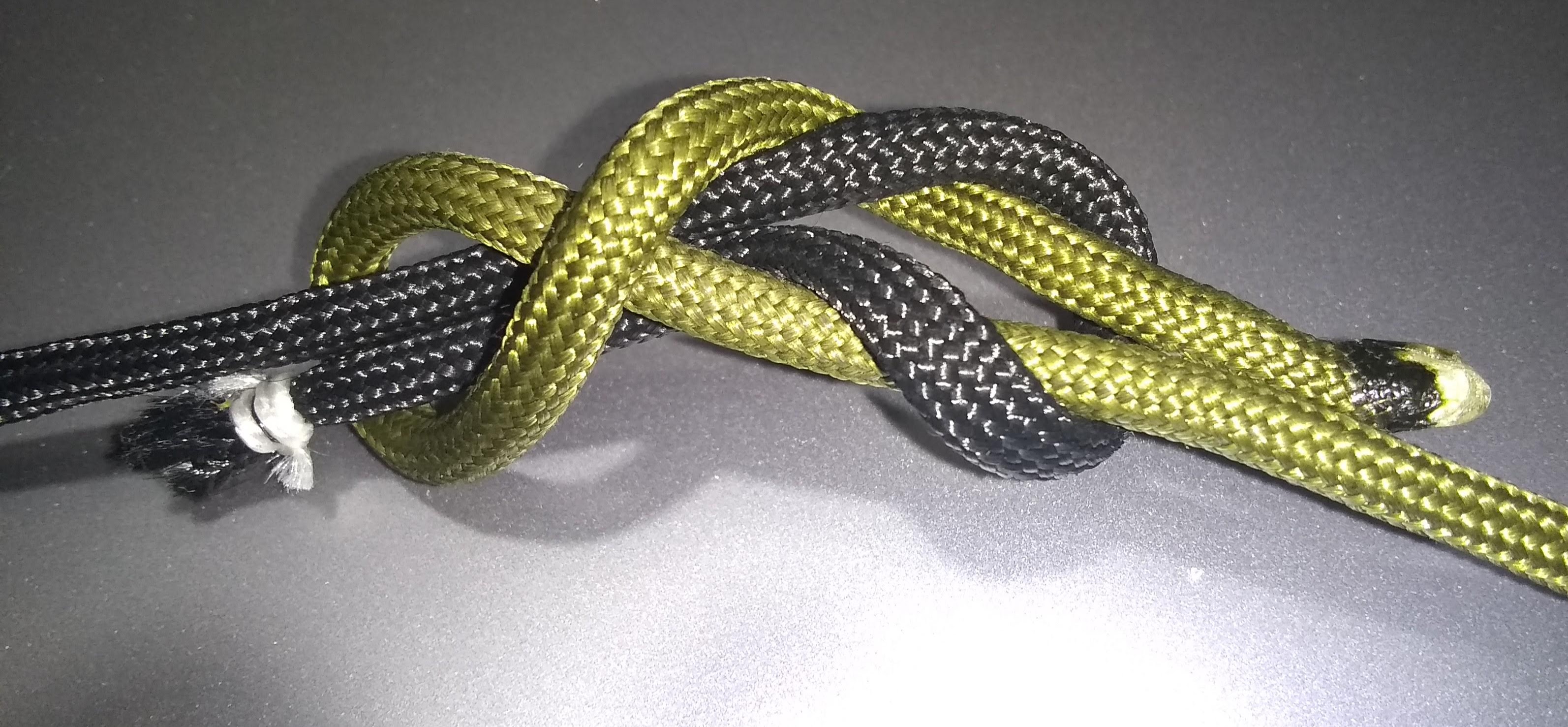Which bends hold best?
A “bend” is a knot for joining two ropes together. Thinking that it would be helpful to know which bends do this job best, I took several pieces of my daughter’s fishing line and did a little experiment.
Experiment
In each line I tied a different bend, which I greased before pulling it tight. I then hung the resulting loop on a hook and suspended a canvas bag from it. I filled the bag with rocks till the fishing line either broke or slipped to a completely untied state. I then repeated the experiment and recorded the average mass of the bag of rocks that had caused the knot to fail.
I was most interested in measuring the “security”, or resistance to slipping, as opposed to breaking strength. That’s why I chose slippery material and made it even slipperier, hoping that each bend would slip before having a chance to break. But alas, some knots just won’t slip.
Results
| Bend knot | Security (kg of rocks) |
|---|---|
| Butterfly bend | 5.4+ |
| Zeppelin bend | 5.4+ |
| Simple-Simon DOUBLE | 5.4+ |
| Simple-Simon UNDER | 5.4+ |
| Simple-Simon CROSSOVER | 4.9 |
| Simple-Simon OVER | 4.0 |
| Double sheetbend | 3.3 |
| Sheetbend | 1.8 |
The ‘+’ symbol indicates that the knot’s slip limit, even tied in grease, exceeds the breaking strength of the line in which it was tested.
Conclusions
I love the alpine butterfly as a bend, a shank, and a loop. It’s versatile and easy to tie, so I’m happy to confirm that it refuses to slip.
The classic sheetbend and double sheetbend are the least secure of all bends tested. The former slips so easily in comparison that its use is hard to justify.
The Simple-Simon-crossover bend is my own creation. In this test it outperformed the Simple-Simon-over, on which it is based, by 23%. Since it’s no harder to tie, this is a satisfying discovery. But it still can’t compete with the security of the Simple-Simon-under, so I’ll stick with that.
Spotlight: Simple-Simon-crossover bend
This experimental knot is a variant of the Simple-Simon-over bend. The only difference is that the standing part and the working end of the first rope are swapped. The second rope is tied around a bight in that rope just as usual. Uniquely among the Simple-Simon knots, the rope ends are ultimately diagonal from each other.
 Simple-Simon crossover
Simple-Simon crossover
The result is that the bight of the first rope is clamped just as in the Simple-Simon-under bend without the relative difficulty of making a pass under the rope. I wanted to see how this knot fares against the other Simple-Simon knots.
The Simple-Simon-crossover does seem to be more secure than the Simple-Simon-over against slippage of the inner bight around which the other rope is wrapped. Its resistance to slippage of the wrapped rope, however, is unimproved by this variation. This leaves the overall security at least slightly inferior to that of the Simple-Simon-under.